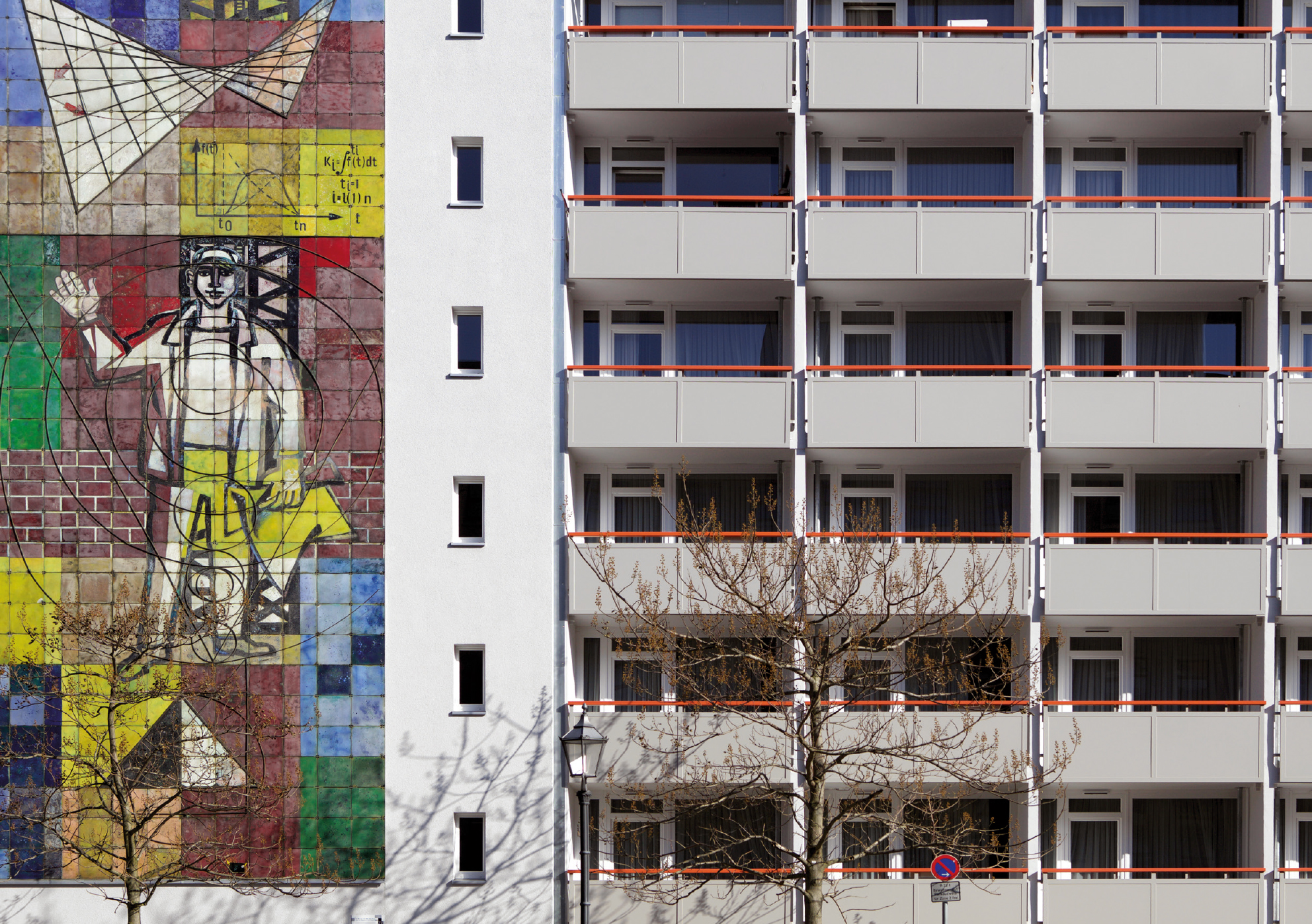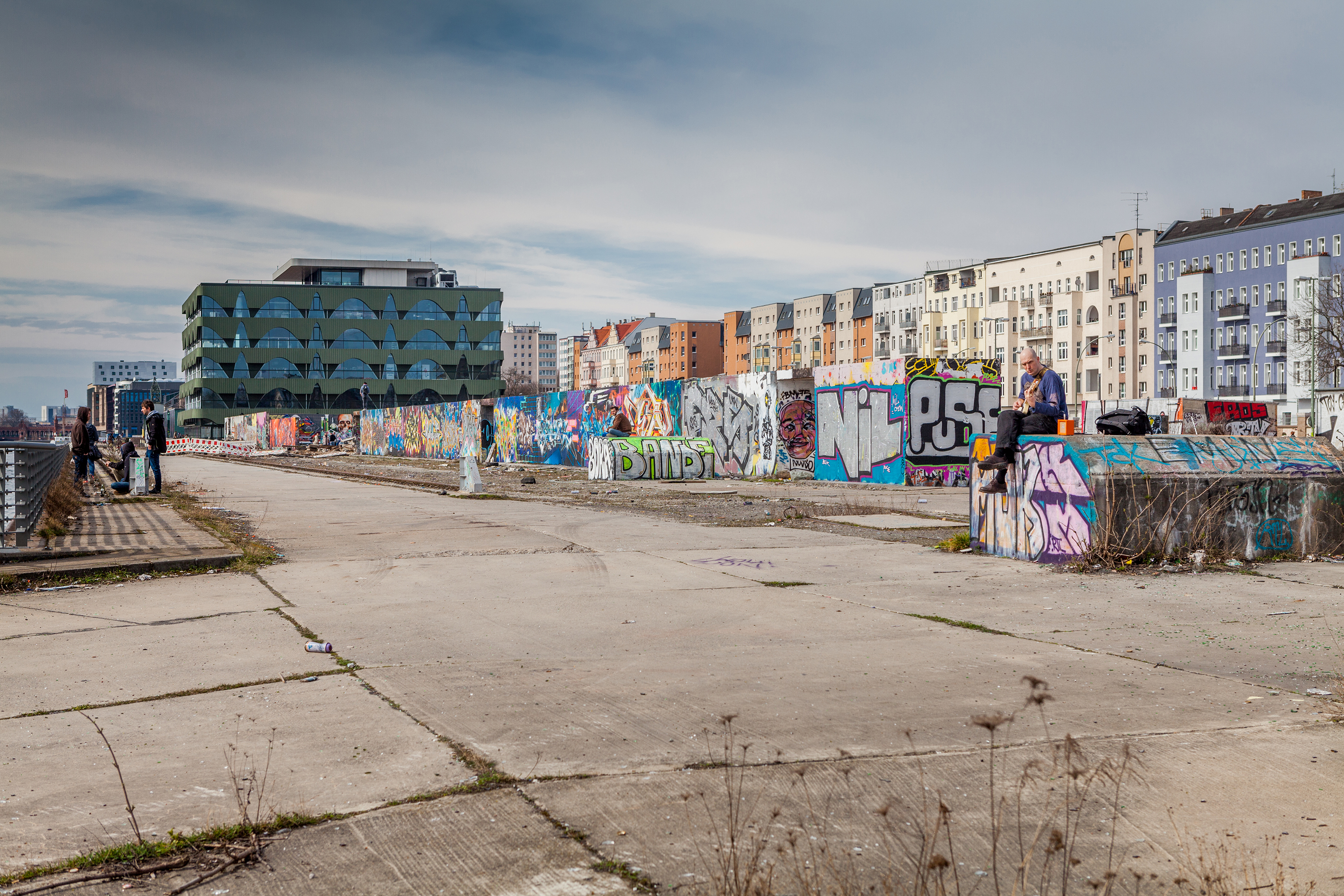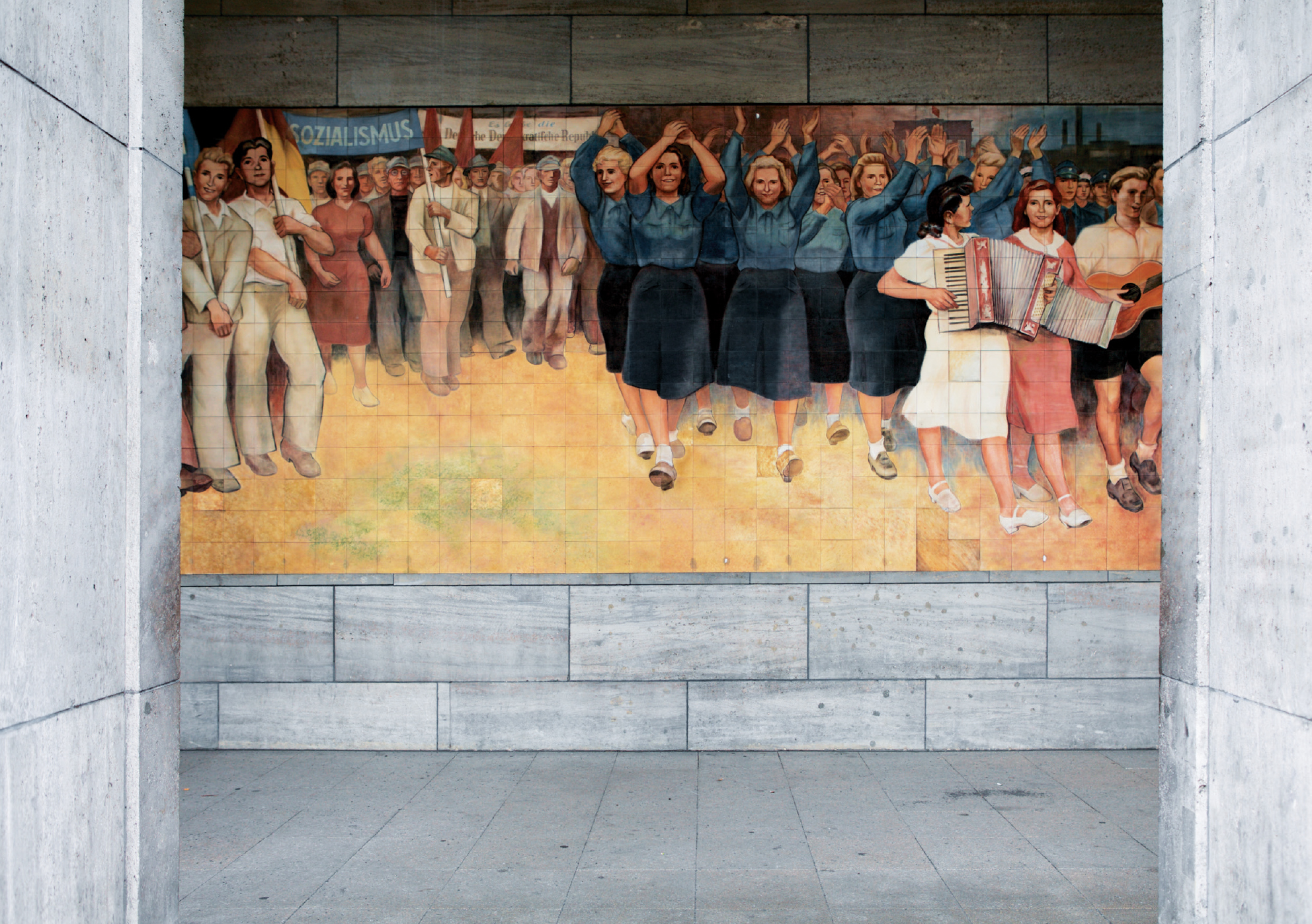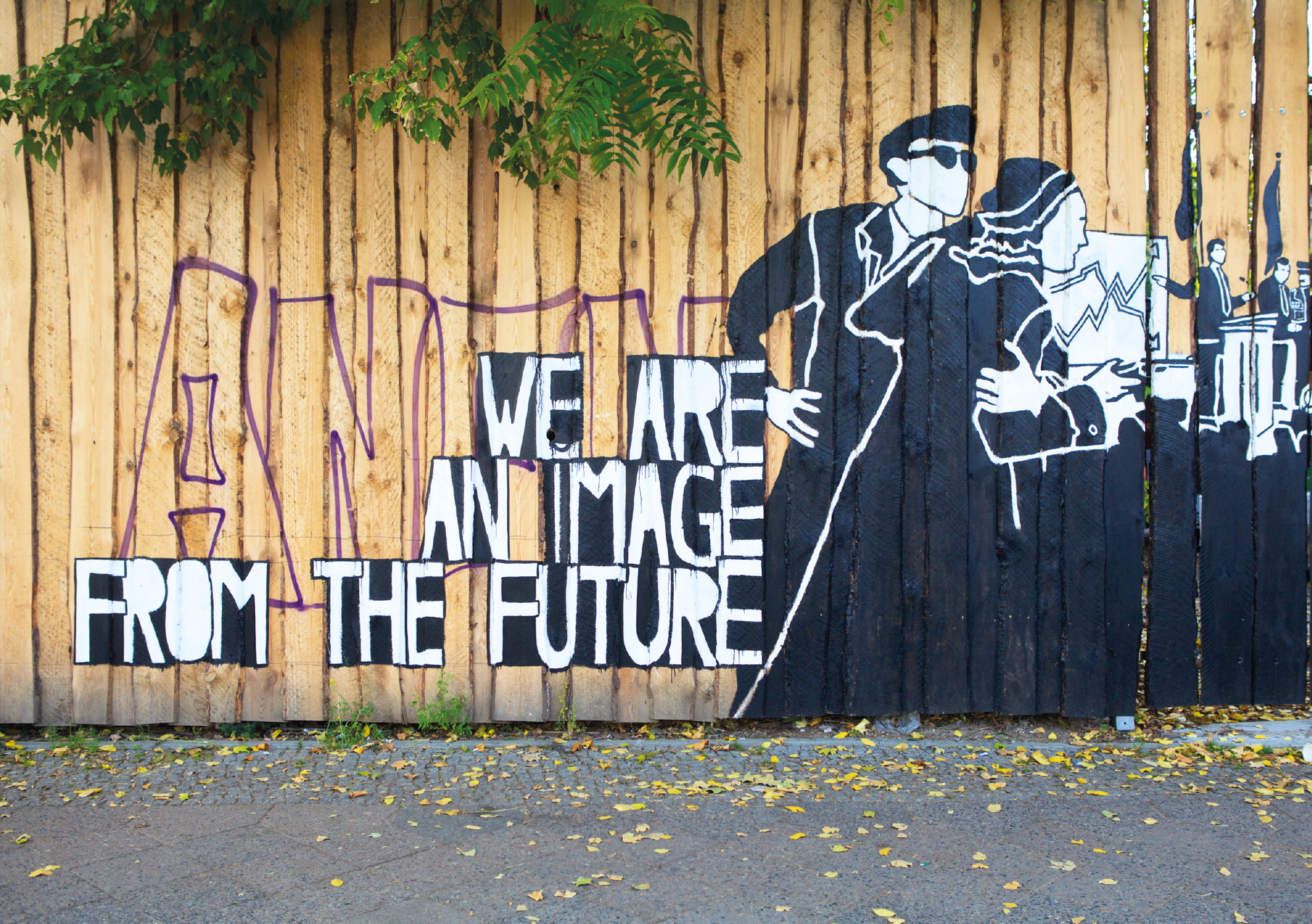The particular historical condition of Berlin, divided by walls and borders, wounded by wars and destructions, designed a city without form characterized by fractures and fragmentations, somehow denying the concept of periphery. In a city without form and without centre, periphery and centrality are questionable concepts. Up to the eighties the city has been the object of massive residential building operations using, both in the East and the West, standard prefabricated technologies. Imprinted by such a conflicted history, marked by divisions and clashes of ideologies, however, modern architectural patterns seem to collide more than the political cold war’s rhetoric would admit.

The over supply of dwelling space, together with the abundance of vacant and accessible lots enriching the public space’s patrimony, significantly contributes to keep affordable living in the city for a wide range of young people, artists, immigrants, adopting diverse styles of life… In the dichotomy of socialist and liberal ideologies confronting themselves in the planning field, a third subject strongly emerge: it is the alternative, somehow utopian view of subcultures, the multitude of creative and artistic forces that have inhabited and moulded the quantity of available spaces of the city. There is a triplicity of planning views in Berlin composing the capacity to transform the urban landscape on multiple scale: the rational comprehensive capacity of state-centred power to structure the territory, the dynamical, deregulated, pervasive capacity of the liberal market to engender exchange value from the physical environment, and the unceasing, tiny, unpredictable action of everyday-life practices redesigning with tactical attitude interstitial space/times, providing the fertile substrata for the growth of a new creative class strongly characterizing Berlin’s identity.
Today, the massive redevelopment of Berlin as a capital tries to reconnect the lacerated fabric of the city, without a definite success in establishing a strong morphological centrality. The city seems rather to develop as a cluster of complementary localities, as a city of villages: a characteristic providing however a tolerant, flexible and variegated environment, fostering its success as a sustainable, appealing, productive cultural capital. Berlin is crossed by intense creative undercurrents, by streams of social energies knitting together the cultural life of the city. A consistent migration of young people from all over Europe and the globe is repopulating the city, characterizing it with dynamism, multiculturalism and innovation capacity. Inzwischen benützt, temporary uses, is an important keyword in such a process, as one of the most apparent outcomes of the dialectic between the capital oriented efforts to revalorize the real estate patrimony of the city and the constructive energy of the emergent creative citizenship. It is a process connected with aspects as the gentrification of important areas of the city, the cooptation of independent and underground cultural producers in the mainstream industry and the innovative practices finding place in the interstices where institution and market economy aren’t able or interested in maintaining strong control. It is also a phenomena connected with global dynamics, transforming Berlin an appealing exception respect to the high cost and exasperate competitiveness of other European capitals, and addressing its centrality in the emergent European cultural geography.

How all these movements and creative energies combine with the remnants of modern city scattered through the city? How the imagination and the constructive ability of new and old citizens deal with the heritage of modernist ideology in the actual struggle to rebuild the disputed contemporary identity of the city?
Our project will look at these questions exploring particular places in the ordered space of the modern city. We will look at settlements responding to the principia of modernism and at local practices / experiences reshaping them. We will ask and investigate the concepts of centrality and marginality, as well as of identity and otherness in such contexts. Some situations we identified as interesting cases are:
- Kottbusser Tor, with its concentration of prefabricated building and immigrant populace reproducing the typical banlieu physical / social model right in the middle of a potentially valuable bourgeoise neighbourhood.
- The area around Ostbanhof, where a Metro and other gross distribution markets reproduce what is typically a peripheral service district right in the middle of a gentrifying neighbourhood as Friederichshain.
- Gropiusstadt and Marzhan, as two example of modernist high rise dense neighbourhoods, product respectively of the capitalist and socialist urbanization, and their contemporary fate in the urban restructuring process.
As usual procedure of ogino knauss, our first goal will be to establish a direct and instinctive relation with the chosen urban / social context through assessments, photographic recognition and public intervention finalised at realizing an art project. This cognitive phase will be completed with a round of interviews and documental researches.

